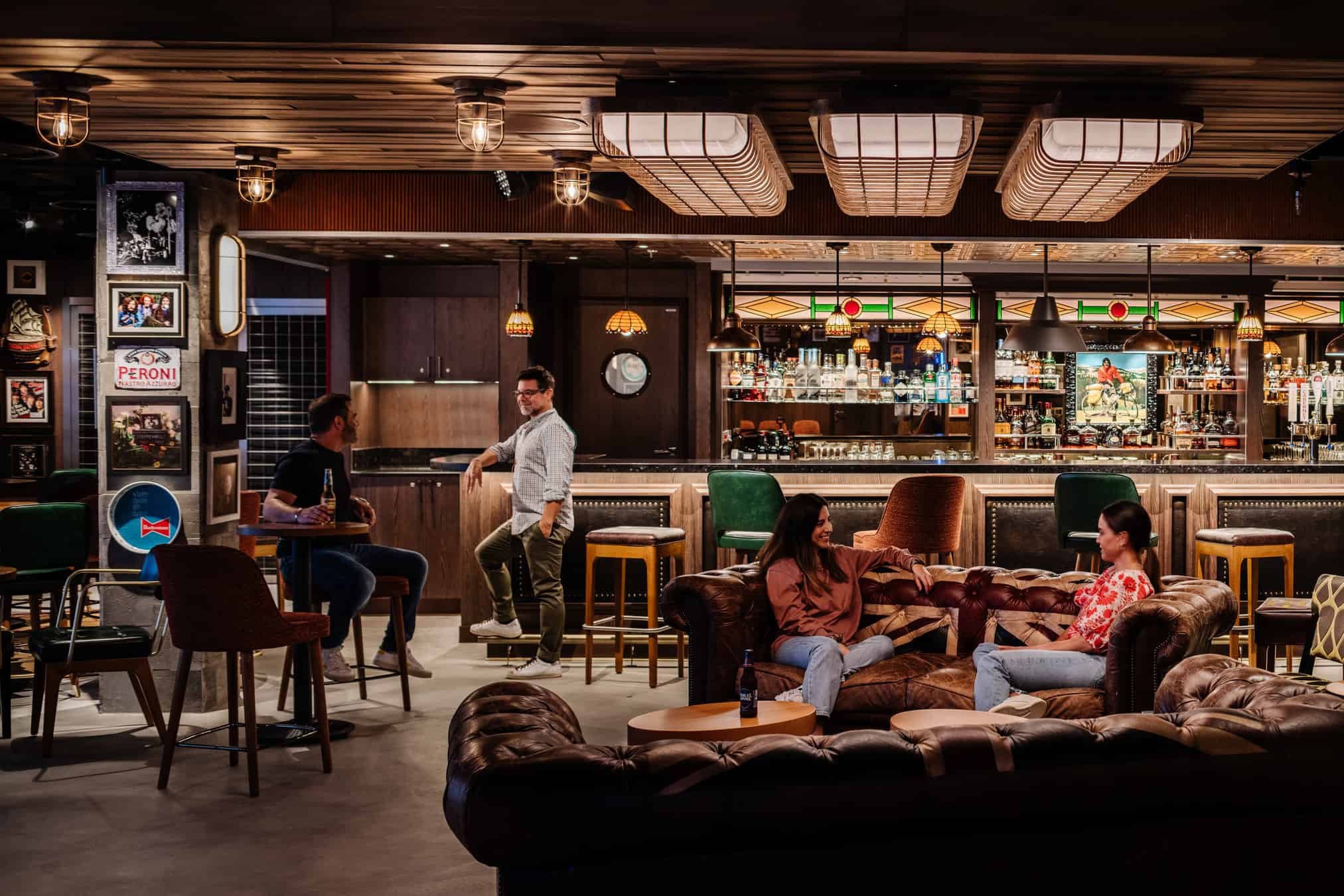
More people are opting to live on cruise ships for months or even years at a time. As you might expect, Studio DADO has some ideas on how to design ships to meet this growing demand in the most stylish way possible.
So, you want to live on a cruise ship. Honestly? We get it. Between the great food, amazing service, incredible views and exotic itineraries, why would you leave if you don’t have to? As it turns out, a lot of people are on the same wavelength. Publications from all corners of the media world, like Travel + Leisure, CNN, CNBC, and Reader’s Digest, are taking note of the people taking this option and the cruise lines making it possible.
But how do we design cruise ships for this kind of mindset shift? What changes when we know more and more guests will go well beyond the typical 1- or 2-week cruises and potentially stay on board for months or even years? And what is cruise ship life really like? Well, we’ve been thinking about it a lot. And we have a few ideas.
No matter how adventurous, everyone needs a comfortable homebase. When that homebase moves through the ocean to different cities and continents, it’s even more important that it feel relaxing and refreshing. We design state rooms and suites to feel larger than they are. We harness natural light and views wherever possible. And we make sure every touchpoint contributes to an unforgettable experience. Cruise ship guests often spend their time on shore excursions, in the ship’s restaurants, or at the pool, but we hope at the end of the day, they can’t wait to relax in the accommodations we design.
Outside the staterooms and suites, expect the unexpected. We wouldn’t go so far as to say that other ship venues shouldn’t be relaxing, but they should be flexible and adaptable to give guests a new experience every time. The restaurants we design (like Prime 7, above, or Chartreuse, below) never have a bad seat. They have a different ambience in each section with so much attention to detail that there’s something new to notice at every meal.
As technology has gotten better (and more pervasive), a strong Wi-Fi connection is non-negotiable for most guests. For “cruise ship life” guests who are still working or semi-retired, the Wi-Fi on most ships is now strong enough to handle a zoom meeting, which isn’t something that could have been said even five years ago. Cruise lines and their designers are catering to this need with better internet speed and more touchdown spaces for work. The announcement that Norwegian Cruise Lines, Oceania Cruises and Regent Seven Seas will now all offer high-speed internet through Starlink will catapult internet speeds, even in the middle of the ocean.
Beyond that, if a traveler will be living on a cruise ship for months on end, they want to connect with the people who are actually there, not just via zoom. We think about layouts on an intricate level and how they affect the way people interact. In short, we encourage connection through conversation and design, which makes all the difference to making good friends when you’re floating around the world.
Over the last year, we have worked on several ships celebrating their maiden voyages. Norwegian Cruise Line’s Prima set sail at the end of 2022, Oceania’s Vista starts welcoming guests this month, and Regent’s Grandeur of the Seas is scheduled to disembark for the first time at the end of the year. Each of these ships caters to a different clientele with different expectations, and we make sure each one is anything but generic. We made sure to think of them with every gesture in every space. On Prima, it’s all about family fun. On Vista, it’s about incredible food. And on Grandeur, it’s about an elevated level of luxury.
We like to think of cruise ships as villages with a series of inter-related neighborhoods, each with its own personality or experience. The reasoning for this is simple. Just as a land-based neighborhood has residential districts, green areas and parks, school zones, a shopping street and so on, so does a cruise ship. And its residents/passengers will enjoy it in those terms. As designers, our goal is to celebrate each “neighborhood” with enough clues and cues that support the narrative concept but advance the overall brand.
As more people come to see the cruise ship life as a viable, adventurous alternative to a standard apartment or home, the financial and architectural calculus will change substantially for cruise lines and their design teams. At DADO, we’re ready.
Pictured: Syd Norman’s Pour House, Norwegian Cruise Line’s Prima